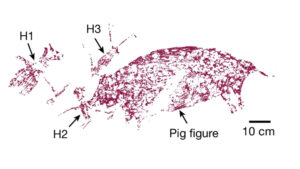In Earth’s Devonian Period, which lasted from 419 to 358 million years ago, the Earth experienced several mass extinctions. About 70 percent of all life on the planet died out.
The trigger for that global disaster came from an unlikely source: tree roots.
University researchers presented evidence for this theory in an article published last week in the Geological Society of America Bulletin.
“Our analysis shows that the evolution of tree roots likely flooded past oceans with excess nutrients, causing massive algae growth,” said Gabriel Filippelli, professor of earth sciences at Indiana/Purdue University.
“These rapid and destructive algae blooms would have depleted most of the oceans’ oxygen, triggering catastrophic mass extinction events,” Filippelli said.
In science-speak, that process is called eutrophication. And it’s very similar to a modern phenomenon happening on a smaller scale. Excess nutrients from fertilizers and agricultural runoff have already caused similar algae blooms in the Great Lakes and the Gulf of Mexico.
In other words, this new research into Earth’s pre-history shows exactly what will happen without curtailing aquatic pollution.

Algae blooms can have a devastating impact on marine life. Photo: Shutterstock
Algae-induced ‘dead zones’
In the Devonian Period, the oxygen-depleting algae blooms came from tree roots. These evolving plants sucked nutrients from the land, then dumped them into the oceans during times of decay.
In this ancient time period, the Earth experienced a roller coaster of phosphorous levels. By analyzing stone deposits from pre-historic lake beds in Greenland and Scotland, researchers discovered that periods of high phosphorous coincided with cycles of decaying plant life on land.
That suggests that dying roots released their nutrients into the planet’s water during these periods.
“It’s not easy to peer over 370 million years into the past,” said Matthew Smart, a PhD student in Filippelli’s lab at the time of the study. “But rocks have long memories, and there are still places on Earth where you can use chemistry as a microscope to unlock the mysteries of the ancient world.”
That doesn’t mean we should worry about modern trees wreaking havoc, however. Nature has since evolved to balance the environmental impact of rotting wood. Modern soil, for example, retains more nutrients than the thin layer of earth back then.
However, man-made pollution represents a new, modern equivalent. Organic wastes like sewage, manure, and fertilizer have also begun depleting oxygen in the Earth’s oceans.
That has led to “dead zones”, where parts of the ocean can no longer sustain life.
“These new insights into the catastrophic results of natural events in the ancient world may serve as a warning about the consequences of similar conditions arising from human activity today,” Filippelli said.






